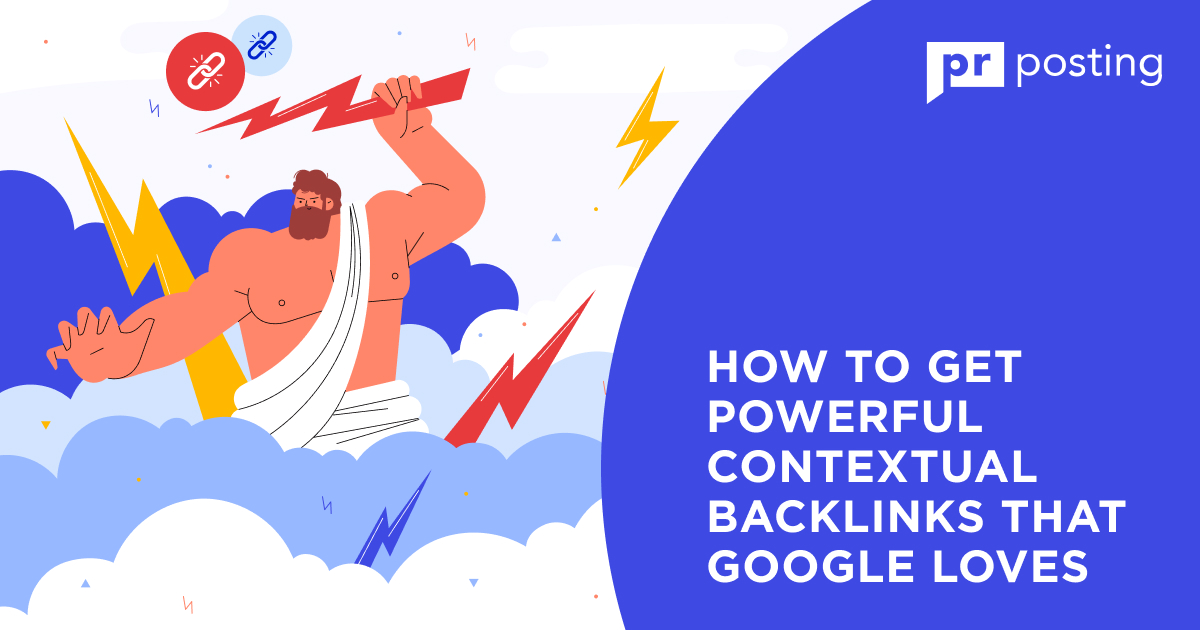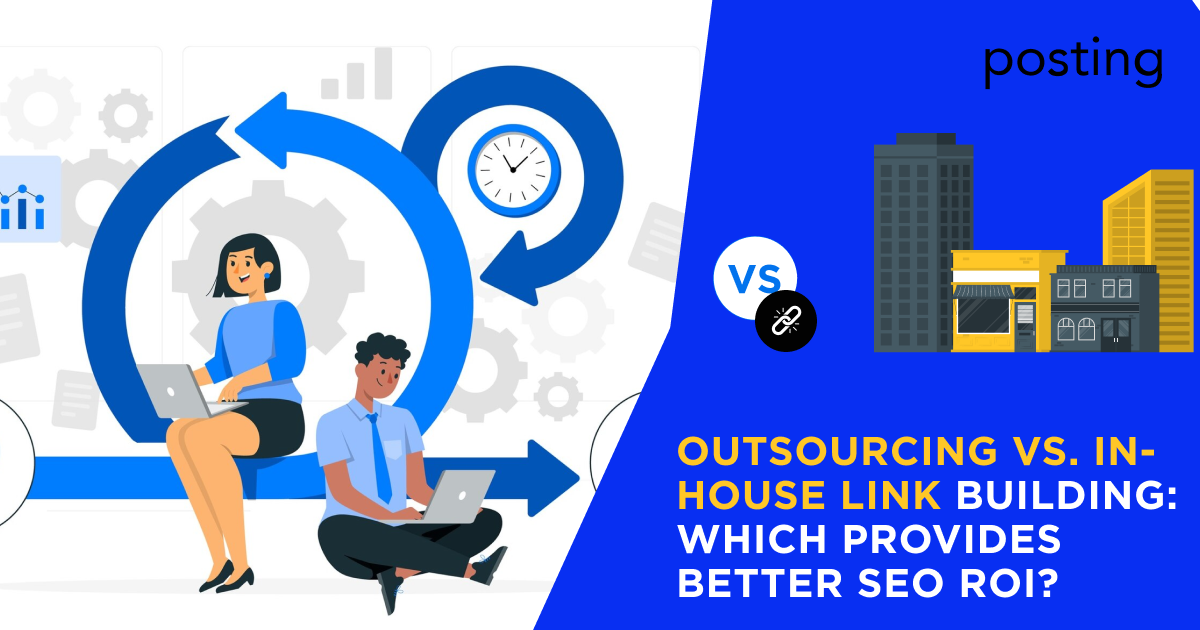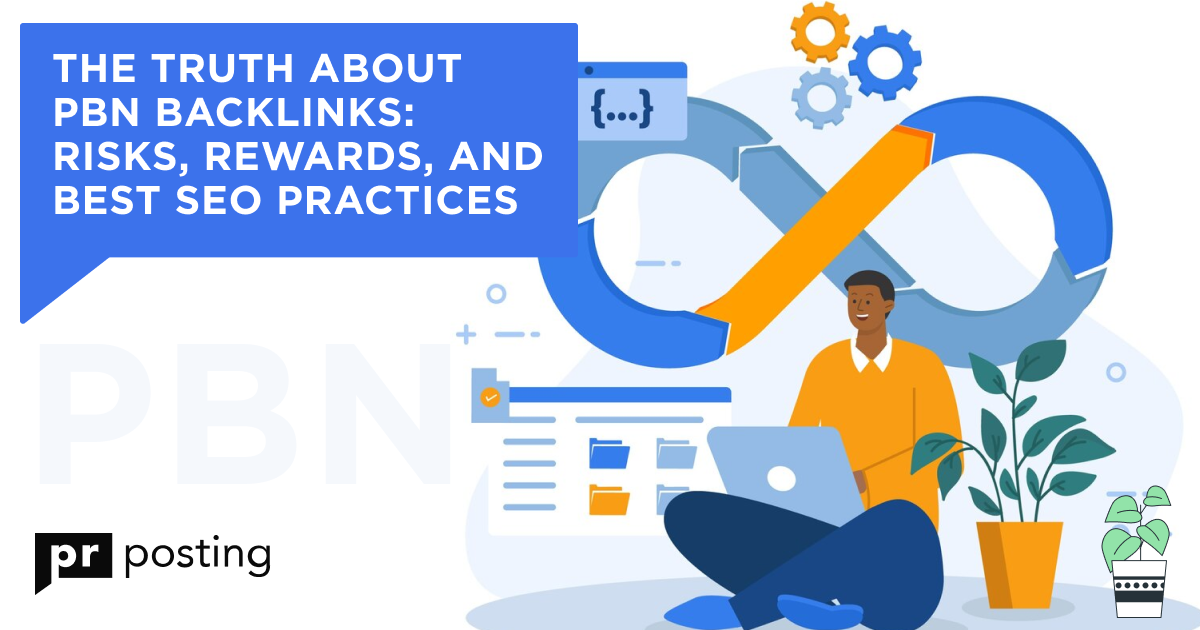How to Get Powerful Contextual Backlinks That Google Loves

A contextual backlink appears inside written content. It fits the sentence and adds value. The link must match the topic. If it feels random, it won’t help.
These backlinks have three key traits:
- Surrounded by relevant words;
- Connected to the article’s theme;
- Placed inside the main text block.
Let’s break that down.
Embedded Naturally Within the Article Content
A strong contextual link feels native. It flows with the sentence. People don’t notice it at first. It reads like part of the story.
Example:
Weak: “Click here for SEO tips.”
Strong: “Many sites earn traffic by using smart contextual backlinks for SEO.”
Surrounded by Relevant Text
Context matters. A link about cooking in a finance article makes no sense. But a link to a recipe inside a food blog works. Search engines check the nearby words. They look for matching topics. If the link and the content don’t match, the value drops.
Higher Value Than Footer/Sidebar Links
Links in footers or sidebars have less weight. Search bots know they repeat on every page. They feel lazy. Contextual links seem fresh. They appear where they matter.
Contextual vs. Non-Contextual Backlinks
Let’s compare the two.
Contextual Backlinks
- Found in the article text;
- Match the topic;
- Help build trust;
- Help readers and bots;
- Often improve rankings.
Non-Contextual Backlinks
- Often off-topic;
- Found in bios, widgets, or sidebars;
- May look spammy;
- Often ignored by search bots;
- Carry less SEO value.
Contextual links help sites grow. Non-contextual ones often go unseen.
Types of Contextual Links
There are three main kinds. You need all of them. Use them wisely, and don’t overdo it.
Internal Contextual Links
These link pages are on your site. They guide readers, help Google crawl better, and lower bounce rates.
Benefits:
- Boost time on site.
- Help spread link equity.
- Improve content visibility.
Inbound Contextual Links (Backlinks)
These come from other websites. People link to your page. It’s like a digital vote. Valuable backlinks usually originate from expert blogs, industry publications, and focused directories.
How to get contextual backlinks:
- Write guest posts.
- Use broken link building SEO.
- Offer data or stats worth linking.
Avoid shady link trades. Search engines understand this.
Outbound Contextual Links
These point from your site to others. Use them to credit sources. Also, link to helpful resources.
Tips:
- Link to trusted sites only.
- Use dofollow contextual backlinks wisely.
- Don’t stuff your content with links.
Outbound links provide value when placed with purpose.
How to Create Contextual Backlinks
Here are smart ways to earn them.
Use Broken Link Building
Find broken links on sites in your niche. Offer your content as a fix.
Steps:
- Use SEO tools to find broken links.
- Check if you have a matching page.
- Reach out and suggest your link.
This method works well.
Write Guest Articles
Many blogs accept guest posts. Pitch clear topics and write well. Add one or two links in the article body. Focus on value, not self-promotion. Editors hate empty chatter.
Create Shareable Assets
Write guides. Make stats pages. Build tools. These attract organic link building. People love linking to helpful stuff, so give them a reason.
Link Internally with Purpose
Place links where they help readers. Use natural text. Don’t repeat the same anchor. Add links only where they add value.
Why Google Loves Contextual Backlinks
Increased Trust and Relevance
Search engines value trust. Relevance helps build it. Contextual links show both. They fit into the topic and lead readers to more insight.
Improve Topic Authority
Google ranks pages based on topic clarity. A relevant link strengthens your page.
Here’s how they help:
- They point to expert pages.
- They show depth in your topic.
- They increase signals of knowledge.
Signal Editorial Value to Search Engines
Bots track how links are placed. Contextual backlinks:
- Show effort;
- Suggest human editing;
- Tell Google this content is worth citing.
That’s how they raise your SEO value.
SEO Benefits
These links do more than build trust. They boost rankings. They help your site grow stronger over time.
Stronger Rankings
Google counts links like votes. A vote from useful content matters more. That’s what contextual backlinks do to improve SEO.
They:
- Raise your page’s score.
- Boost relevance for keywords.
- Help you climb faster.
No trick. Just smart placement.
Better Domain Authority
High-value links raise your domain’s strength. You don’t need hundreds. You need a few that count. High PR contextual backlinks from known sites are key. They pass link equity. They spread trust across your domain.
Enhanced Link Profile
Google looks at the link shape. Spam links harm you. Natural ones help.
A good link profile:
- Mixes internal and external links.
- Has dofollow contextual backlinks and nofollow ones.
- Grows over time.
That’s how you stay safe and visible.
User Engagement and Brand Recognition
Links do more than please Google. They help people move between ideas, guide readers, and build memories.
Improve Click-Throughs from Relevant Sources
People click links they trust. A link inside text gets more clicks. It feels part of the thought process.
Benefits include:
- More traffic;
- More time on site;
- Lower bounce rates.
That means more chances to convert readers.
Build Brand Trust and Recall
If your name shows up in smart places, people remember. The right backlink gives exposure.
Contextual backlinks help with this. They:
- Put your name in helpful places;
- Connect it with good ideas;
- Raise reader confidence.
With time, visitors start to notice and rely on your site.
How to Earn Contextual Backlinks
These links must be earned. No shortcuts. You need content that people want to link to.
Create Link-Worthy Content
Good content draws links. People share what helps them. They link what they teach them. Here’s how to build that content.
What Makes Content Linkable?
- Research-backed data:
- Use fresh numbers.
- Include charts and citations.
- Industry white papers and guides:
- Give deep insight.
- Help readers solve real problems.
- Free tools or calculators:
- Offer something useful.
- Let users solve tasks with ease.
People love things that save them time.
Examples of High-Value Content
Let’s look at what attracts organic link building naturally.
- Case Studies. Show real outcomes. Offer proof. People trust results.
- Visual Content (Infographics, Charts). Easier to scan. Easier to share. Adds clarity fast.
- Long-Form Thought Leadership. Covers topics in full. Adds voice. Builds trust.
These formats earn shares. They bring in contextual backlinks over time.
Outreach-Based Link-Building Strategies
Guest Posting on Relevant Blogs
Guest posting still works. But it needs care. You must pick the right blogs. These blogs should speak to your audience and have solid trust signals.
Focus on Sites with DA 50+
High-authority sites share their power. Low-quality sites dilute your link profile.
Look for:
- Domain Authority (DA) of 50 or higher;
- Clear traffic data (check with SimilarWeb or Ahrefs);
- Regular publishing schedule;
- Active reader base.
Match Your Niche and Audience
Relevance adds strength. A backlink from a related blog carries more weight.
Check for:
- Content topics that match yours;
- Readers who care about your subject;
- A tone that aligns with your voice.
This helps your contextual backlinks look natural.
Include Contextual Backlinks Within the Body Content
A link in the body has more value than one in a bio.
Make sure your link:
- Fits the paragraph;
- Helps the reader;
- This leads to a helpful source.
This is how you get dofollow contextual backlinks that count.
How to Pitch Guest Posts
Pitching well matters. Editors get many requests. Stand out with effort.
Follow this method:
- Use Tools Like Ahrefs to Identify Prospects:
- Find blogs linking to similar content.
- Filter by niche and authority.
- Personalize Outreach:
- Use their name.
- Refer to a recent post.
- Keep your message short.
- Highlight the Value of Your Proposed Content:
- Suggest a topic that their readers want.
- Explain why you can write it well.
- Mention any data, examples, or visuals you will include.
- Always follow up if they don’t reply in five days.
Broken Link Building
This strategy helps others while helping yourself. Many pages have dead links. You offer a fix.
Find Broken Links on Authoritative Sites
Use browser plugins or SEO tools. Search for broken links on high-value pages.
Steps:
- Search for top pages in your niche.
- Run a broken link checker.
- Note any dead links in the content.
Sites with high PR contextual backlinks are ideal targets.
Offer Your Content as a Replacement
Your offer must be helpful. Send a clear and respectful message.
Include:
- The broken link you found;
- Your page that matches the topic;
- A short thank you note.
Politeness helps build good relationships. Build your reputation while earning links.
This method shows effort. Webmasters appreciate it. They may link again later.
It helps you:
- Get quality links;
- Start real conversations;
- Build a helpful brand image.
This is real broken link building SEO in action.
Interview and Podcast Opportunities
Podcasts give more than reach. They also offer strong backlinks. Hosts often link to your site from show notes or related pages.
Become a Part of Authoritative Podcasts
Look for podcasts with real listeners. Check rankings and reviews.
Use tools like:
- Listen to Notes
- Apple Podcast Search
Check if they cover topics close to yours.
Earn Backlinks from Show Notes and Web Content
Ask for a link. Most hosts include one. Some add links to your other content, too.
You can:
- Link to a relevant blog post.
- Share a free download.
- Offer extra resources.
These contextual backlinks support your credibility and SEO.
Choose Niche-Relevant Platforms
Avoid wide, general podcasts. Pick focused ones. They lead to better links.
Focus on:
- Industry-specific hosts;
- Topic alignment;
- Audience size and loyalty.
This boosts both traffic and trust. Outreach helps you earn better links. The process takes time, but the reward lasts.
Organic Link Building Tactics
Organic link building begins with real people, not bots or schemes. You help readers first. Then, they link to your work because it helps them explain something or support a point.
Use Social Media to Attract Links
Social media helps you reach people who care about your subject. But it works best in smaller, focused spaces.
Start here:
- Join niche groups on Reddit, Facebook, or LinkedIn.
- Answer questions in those groups.
- Drop links only if useful and allowed.
You want to be helpful, not loud.
Share Thought Leadership and Research Content
Original content attracts more links. If you run tests or publish studies, people link back.
Try these:
- Poll your audience and share the results.
- Summarize industry research in a useful format.
- Post mini case studies on social platforms.
Be brief but specific. Avoid fluff. Add images if possible.
Encourage Reshares and Mentions
Make it easy for others to quote your content. Create short snippets that work in their blogs, forums, or social posts.
Try these formats:
- One-sentence summaries;
- Visual charts with share buttons;
- Downloadable PDFs or templates.
People love sharing tools that make them look smart or helpful. This helps you gain contextual backlinks for SEOwithout asking.
Strategic Anchor Text Selection
Anchor text shapes how search engines read your links. It’s a small detail, but it has weight. Choose carefully. Don’t repeat the same phrase each time. Mix things up. Make sure the anchor fits the page.
Types of Anchor Text to Use
Each link needs a clear anchor. Some links need a name. Others need a keyword. Others just need to lead somewhere obvious.
Here’s what to use:
- Naked URLs
- Use in references or citations.
- Keep it simple for technical pages.
- Branded Names
- Help people remember your name.
- Work well on PR and about pages.
- Partial and Exact Match Keywords
- Use sparingly.
- Don’t force them into every sentence.
- Long-Tail Descriptive Anchors
- These look natural and help ranking.
- Use for blog posts, guides, or resources.
Avoid overusing any one type. A mixed anchor profile looks natural and works better.
Avoid Keyword Stuffing
Search engines now spot forced anchor text fast. Keep it clean.
- Write links that feel natural in the sentence.
- Add value first, then insert a link.
- Break repetition with fresh anchor text.
Stuffed anchors hurt SEO and trust. Users click less. Engines flag more. Instead, write to inform. Let your content earn the link.
Mix anchor styles:
- Use brand names.
- Add questions.
- Insert long, useful phrases.
This improves your contextual backlinks without triggering filters.
Analyze Link Quality and Relevance
You can’t fix what you don’t measure. Start with the source.
Use tools that show you where links point and why they matter. Focus on three areas:
Authority of the Linking Site
Use tools like:
- Ahrefs
- Moz
- SEMrush
Check domain authority, page rank, and trust signals. High PR contextual backlinks from a strong site boost rankings faster.
Avoid low-grade directories. Look for clean, content-rich pages.
Relevance of the Source Page
Does the linking page match your topic? If not, the link may count less.
Strong contextual backlinks appear in articles that match your SEO focus.
For example:
- A fitness blog linking to a health supplement guide.
- A marketing site linking to SEO case studies.
The closer the match, the higher the value.
Placement in Context
Where the link appears matters:
- Best. Within the body of a paragraph.
- Good. Near related content sections.
- Weak. Footers, sidebars, or author bios.
Contextual backlinks meaning depends on the flow. Links should feel like part of the text. Avoid random drops. Keep links near helpful facts or insights.
Track SEO Metrics and Traffic
Data shows what works. Smart tracking reveals your link-building progress. Start with these.
Topical Trust Flow
- Check how well your site ranks within its niche.
- Use Majestic to view Trust Flow metrics by topic.
- If your backlink profile grows in the right topics, you’re on track.
Referral Traffic
Good links bring traffic, not just rankings.
Use Google Analytics to view:
- Click-through rates from external sites;
- Bounce rates from referring domains;
- Time on the page after the link is clicked.
This shows if people stay or leave.
Look for:
- Blogs that send steady traffic;
- Forums that spark engagement;
- Guides that bring active users.
Avoid dead links or link farms.
On-Site Engagement and Conversions
It’s not enough to get the link.
Track:
- Clicks on the signup buttons;
- Downloads from your blog;
- Contact form completions.
These actions turn organic link building into clear gains.
Final Thoughts
Don’t chase volume ― chase quality. The best links feel earned. They speak to a real reader and fit within useful content.
Contextual backlinks beat forced links every time. They blend authority and meaning.
Use a mix of:
- Smart tools;
- Clear writing;
- Topic-focused outreach.
Skip black-hat tricks. Build links that people respect. Think long-term.
A few dofollow contextual backlinks on the right sites can shift rankings. Track everything. Adjust as needed. Stay consistent.
That’s how you get links that last.




